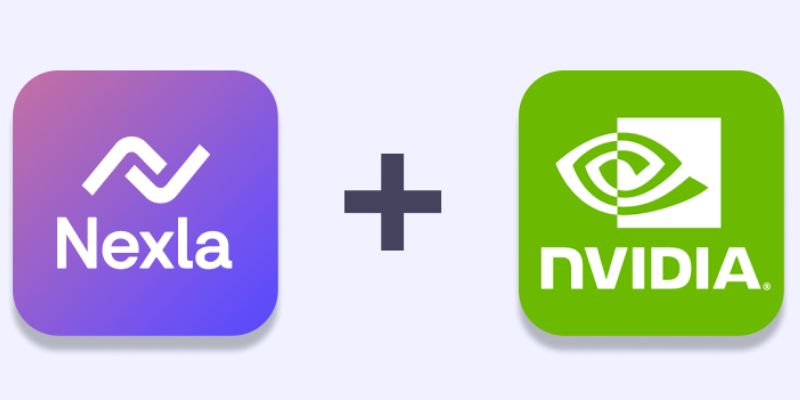Advertisement
In today's dynamic digital era, enterprises increasingly lean on artificial intelligence (AI) to streamline operations, personalize customer experiences, and unlock new revenue opportunities. IBM, a pioneer in technology innovation, has embraced an open-source, multi-model AI strategy to help businesses remain agile and competitive. This approach encourages collaboration and ensures scalability and adaptability in rapidly changing markets.
Understanding IBM's forward-thinking AI framework is crucial if you aim to future-proof your organization. This article explores five powerful ways IBM's open-source AI strategy opens new business potential.
IBM's AI strategy is built on four key pillars: open source, multi-model AI, hybrid cloud integration, and governance. Instead of relying on a single proprietary system, IBM embraces open-source frameworks and flexible cloud platforms, empowering businesses to build tailored, scalable, and ethical AI solutions.
IBM's Approach Promotes:
IBM's AI solutions have reshaped operations in various sectors. Some impactful applications include:
IBM integrates its AI stack into its leading open-source tools like TensorFlow, PyTorch, Hugging Face, and Kubernetes. This ecosystem accelerates innovation by allowing developers to build and deploy faster using prebuilt models and community contributions.
Access to a Vast Community and Resources: Open source connects businesses to a global developer base that is constantly refining and improving AI frameworks. This speeds testing, debugging, and feature enhancements without waiting for proprietary updates.
Freedom to Customize and Scale: Developers can adapt AI models to match specific business needs rather than being tied to rigid, vendor-controlled architectures. Open standards enable easier scaling, experimentation, and version control.
Why It Matters: Open-source tools reduce development costs and time while encouraging collaboration and long-term adaptability.
Instead of relying on a single algorithm, IBM's AI strategy uses multiple models to process structured, unstructured, and semi-structured data. This enhances the richness and accuracy of insights across business functions.
Improved Performance Through Model Diversity: Using multiple AI models in parallel, IBM's systems can handle tasks like image recognition, text analysis, and predictive analytics more efficiently. This layered approach reduces bias and boosts overall reliability.
Supports A Wide Range of Business Domains: From supply chain monitoring to environmental risk assessments, multi-model AI lets businesses tackle complex challenges spanning departments and industries under one intelligent platform.
Why It Matters: Multi-model AI delivers deeper, more contextual intelligence, leading to better decisions and cross-functional alignment.

IBM designs AI solutions for hybrid cloud environments, leveraging Red Hat OpenShift for seamless deployment. This allows organizations to use a mix of on-premises, private, and public cloud systems.
Data Sovereignty and Regulatory Compliance: Companies can control where their data resides, a vital feature in regulated industries like defense or pharmaceuticals. Hybrid cloud ensures that local laws and compliance standards are respected.
Performance Without Compromise: Businesses can scale their AI models across environments without latency issues. Edge computing support ensures real-time analytics where needed most, close to the data source.
Why It Matters: Hybrid cloud infrastructure allows enterprises to deploy AI anywhere while maintaining security, speed, and compliance.

IBM prioritizes responsible AI development with a strong focus on explainability, fairness, and compliance. With tools like Watsonx. Governance, businesses can ensure their AI models are trustworthy and aligned with ethical standards.
Automated Monitoring and Bias Detection: AI models are automatically scanned for biases, ethical risks, and policy violations. This reduces unintended discrimination and ensures outcomes are fair and balanced.
Data Lineage and Model Accountability: Every model and dataset is tracked, enabling full input and output traceability. This transparency supports internal audits and builds stakeholder confidence.
Why It Matters: Trust is critical in AI adoption. IBM's built-in governance helps enterprises meet legal requirements and foster responsible AI usage.
IBM offers tools like Watson Studio and open APIs to streamline AI development for technical teams. This lowers the barrier to entry and enables faster experimentation, deployment, and iteration.
Pre-Trained Models and AutoAI Tools: IBM provides ready-to-use AI models that solve common business problems, reducing development time. AutoAI automates model selection, training, and tuning, making advanced analytics accessible to more teams.
Collaborative Environments with Open Integration: Support for Jupyter notebooks, Git integration, and open frameworks encourages collaboration among developers, analysts, and business leaders. Everyone works in sync, improving project success.
Why It Matters: By democratizing AI development, IBM enables businesses to innovate faster and upskill teams without needing deep AI expertise.
IBM's AI strategy integrates automation capabilities across its solutions to help enterprises streamline workflows, reduce manual errors, and enhance overall productivity. By embedding AI into automation platforms like IBM Watson Orchestrate and IBM Cloud Pak for Business Automation, businesses can shift from reactive to proactive operations.
Intelligent Workflow Automation Across Departments: IBM's AI can automate repetitive HR, finance, and customer service tasks, improving turnaround time and freeing human resources for more strategic work.
Context-Aware Decision-Making in Real-Time: AI executes tasks and learns from patterns, enabling smarter responses and process improvements over time.
Why It Matters: AI-driven automation significantly boosts efficiency, reduces costs, and minimizes human error, giving enterprises a strong competitive edge in today's lean and agile business environment.
IBM's AI strategy exemplifies how open-source collaboration, responsible innovation, and hybrid cloud integration can redefine business performance. By embracing a multi-model, ethical, and developer-centric approach, IBM empowers enterprises to build scalable, intelligent systems tailored to their specific goals. Whether navigating complex data landscapes or ensuring regulatory compliance, IBM's AI ecosystem offers the tools to stay ahead in a competitive market. The fusion of flexibility, transparency, and enterprise-grade security positions organizations for long-term success.
Now is the time to explore IBM's open AI framework—future-proof your business, accelerate innovation, and lead with intelligence.
Advertisement

Explore how IBM's open-source AI strategy empowers businesses with scalable, secure, innovative, and flexible AI solutions.

Want to create marketing videos effortlessly? Learn how Zebracat AI helps you turn your ideas into polished videos with minimal effort

Nexla's Nvidia NIM integration allows scalable AI data pipelines and automated model deployment, boosting enterprise AI workflows

Explore the key differences between class and instance attributes in Python. Understand how each works, when to use them, and how they affect your Python classes

Know how AI-powered advertising enhances personalized ads, improving engagement, ROI, and user experience in the digital world

Wondering if third-party ChatGPT apps are safe? Learn about potential risks like data privacy issues, malicious software, and how to assess app security before use

Pinecone unveils a serverless vector database on Azure and GCP, delivering native infrastructure for scalable AI applications

Learn Bayes' Theorem and how it powers machine learning by updating predictions with conditional probability and data insights

Discover 8 powerful ways AI blurs the line between truth and illusion in media, memory, voice, and digital identity.

Trying to choose between Bard, ChatGPT, and offline Alpaca? See how these language models compare in speed, privacy, accuracy, and real-world use cases

Learn why businesses struggle with AIs: including costs, ethics and ROI, and 10 things they can do to maximize output.

Consider model size, cost, speed, integration, domain-specific training, and ethical concerns when you choose the right LLM